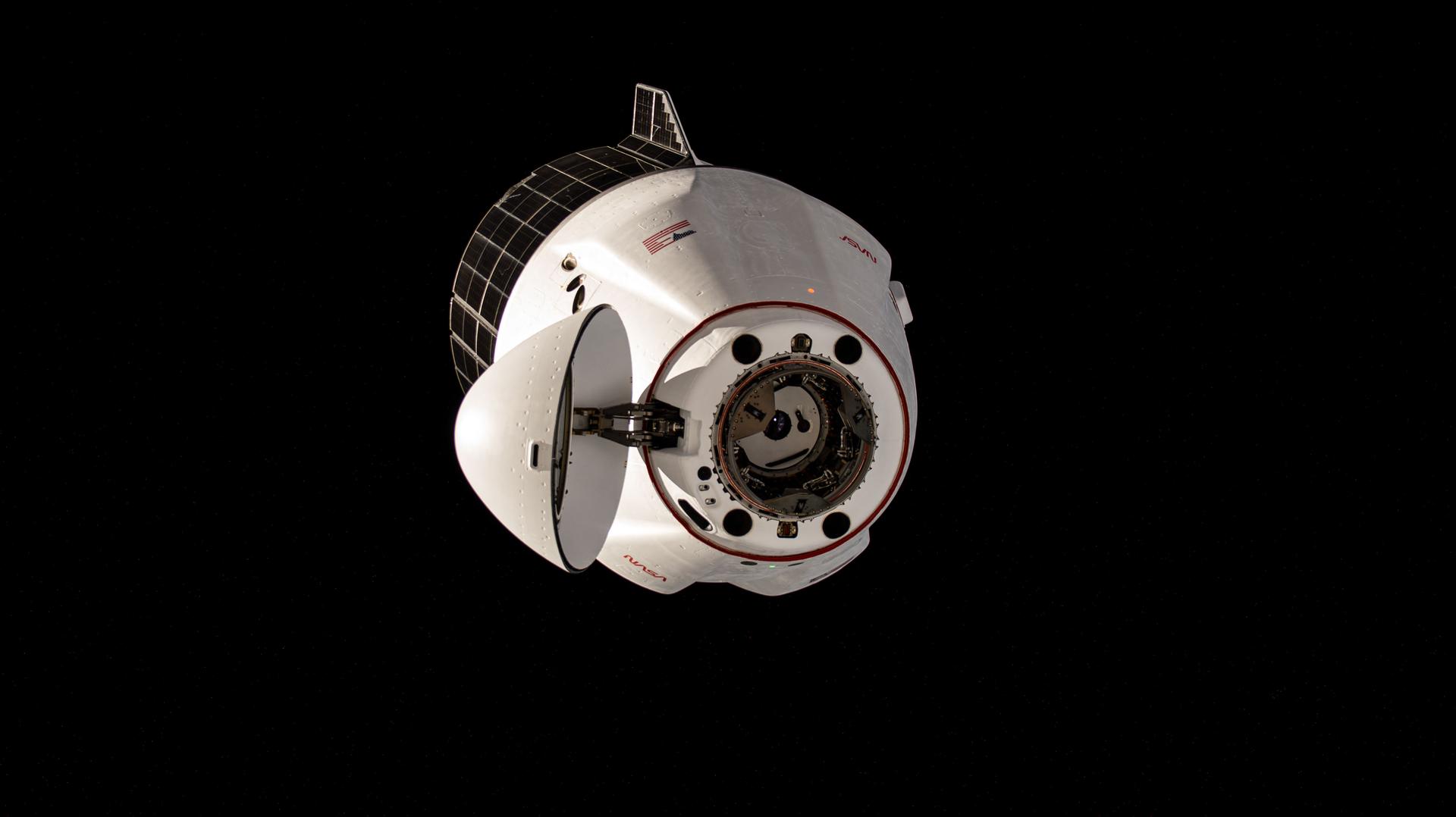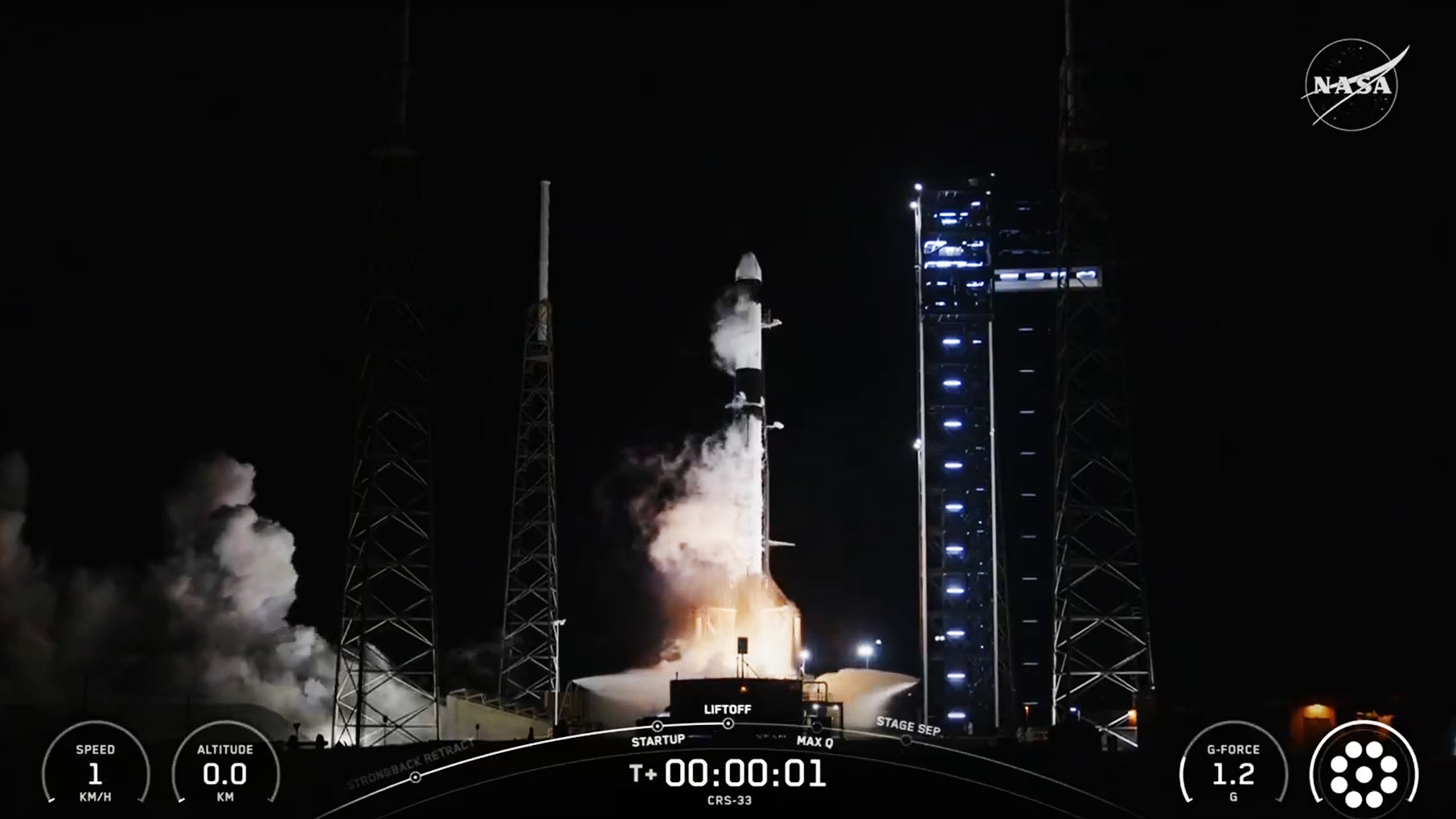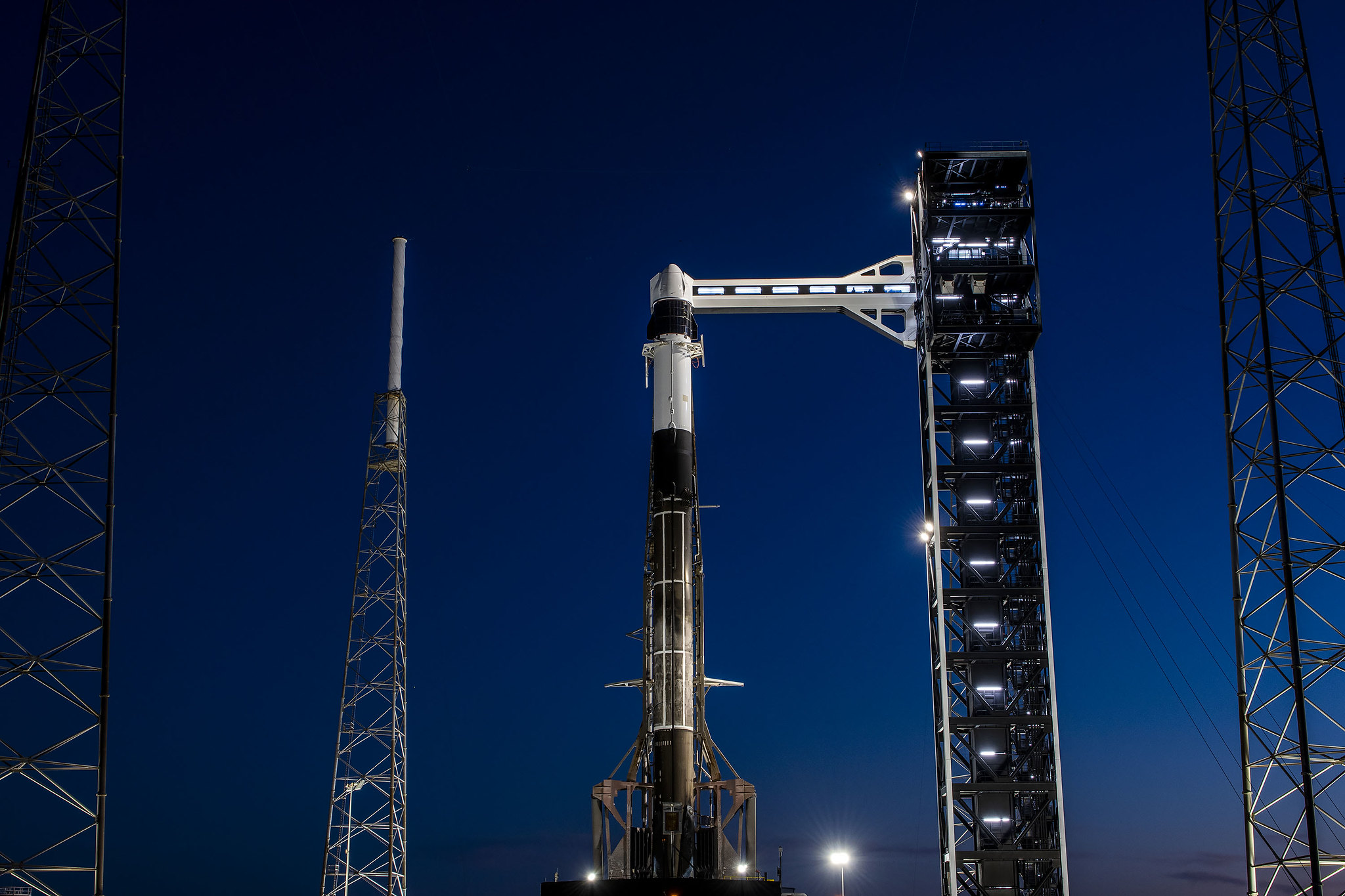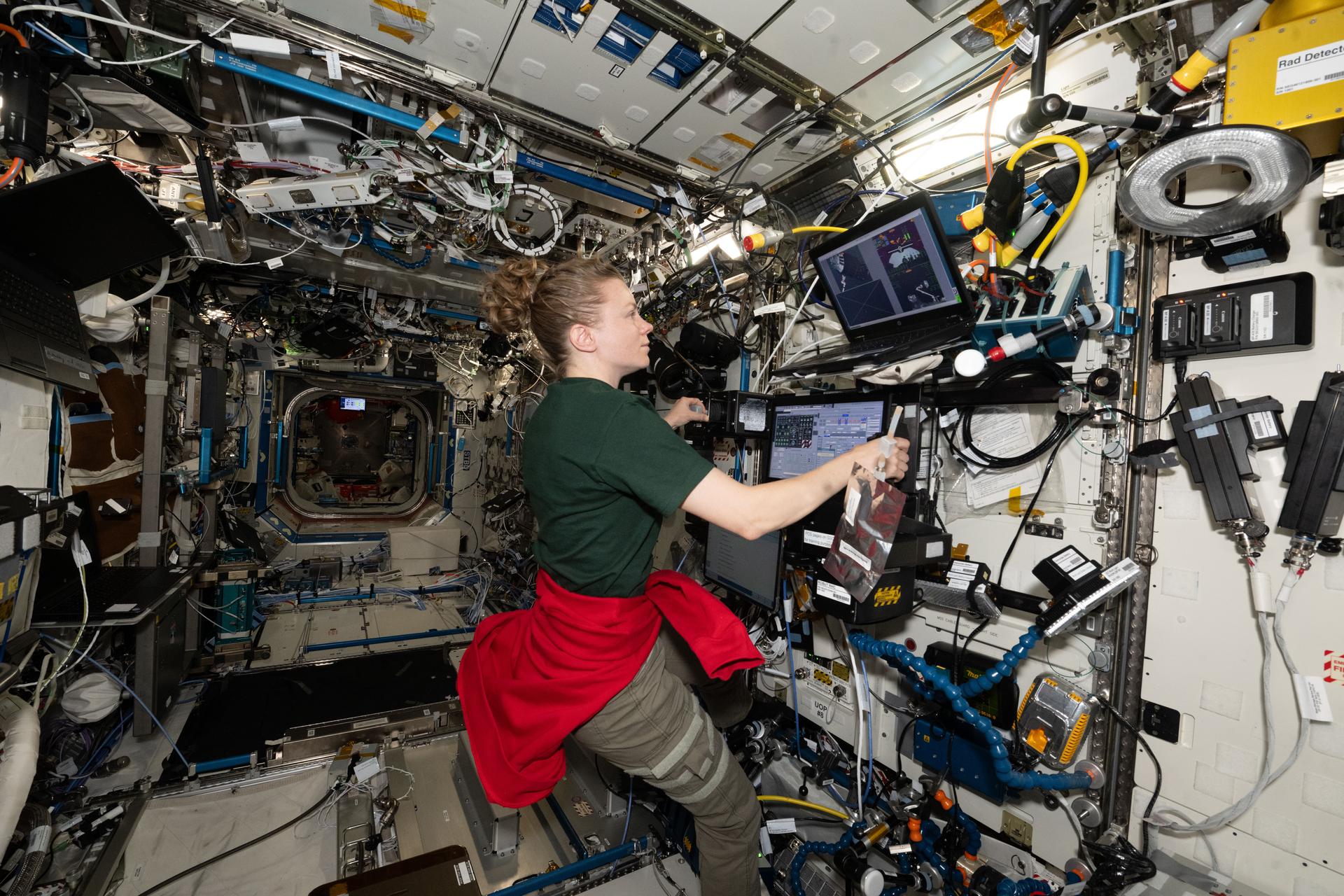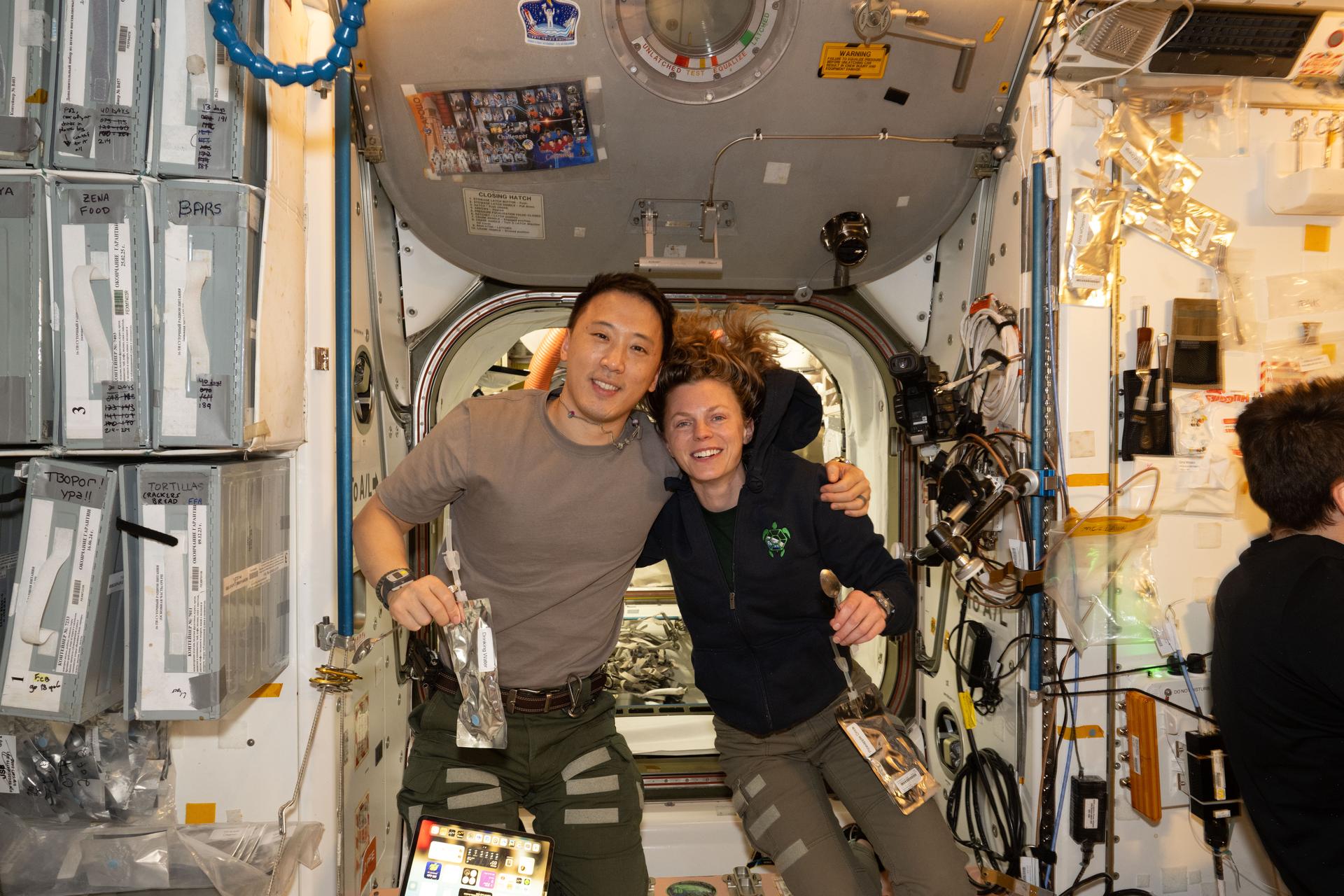Crew Awaits Dragon Cargo Mission and Keeps Up Human Research
The SpaceX Falcon 9 rocket with the Dragon cargo craft atop has rolled out to its launch pad at Cape Canaveral Space Force Station in Florida counting down to a launch targeted for no earlier than 2:45 a.m. on Sunday. Dragon is scheduled to dock to the International Space Station’s forward port on the Harmony module at 7:30 a.m. on Monday delivering over 5,000 pounds of science, supplies, and hardware to the Expedition 73 crew. NASA+ will begin its launch coverage at 2:25 a.m. on Sunday. Docking coverage begins at 6 a.m. on Monday.
NASA Flight Engineers Mike Fincke and Jonny Kim will be on duty on Monday monitoring Dragon’s automated approach and rendezvous. Fincke will be the first one to open Dragon’s hatch after it docks and enter the vehicle beginning four months of Dragon cargo operations. He and Kim joined fellow flight engineers Zena Cardman of NASA and Kimiya Yui of JAXA (Japan Aerospace Exploration Agency) on Friday and reviewed Dragon’s mission profile and the variety of cargo they will unpack and stow inside the space station.
Meanwhile, the orbital residents kept up their human research on Friday exploring how weightlessness affects the heart, muscle, and bone systems. Spacesuit work and lab maintenance rounded out the crew’s schedule at the end of the week.
Kim worked throughout the day inside the Columbus laboratory module on biomedical science operations for the CIPHER investigation. The former Navy SEAL called down to doctors on the ground who monitored as he attached electrodes to his chest and scanned his thigh artery with an ultrasound device. The data will give doctors an insight into an astronaut’s cardiovascular system helping improve health monitoring tools and protecting crews traveling farther and living longer in space.
Fincke set up high-definition cameras and a motion capture system inside the Tranquility module that would record his workout on the advanced resistive exercise device (ARED), hardware that mimics free weights on Earth. The exercise research is for the ARED Kinematics investigation that observes the stresses that an astronaut’s muscles and bones experience during a workout in microgravity. Results may lead to improved exercise programs in space and safer training and better rehabilitation procedures on Earth.
Cardman and Yui took the morning off on Friday before wrapping up their workweek with science and maintenance duties. Cardman first took a robotics test on a computer for the portion of the CIPHER study that measures cognition, or space-caused changes to her brain structure and function. Next, she installed high-definition cameras that Fincke had serviced the day before on to a spacesuit helmet. Yui swapped fuel bottles for combustion research in the Kibo laboratory module then stowed the ARED hardware Fincke used earlier during his exercise investigation.
Station Commander Sergey Ryzhikov and Flight Engineer Alexey Zubritsky, both from Roscosmos, took turns studying how microgravity affects the cells that line the interior of the blood vessels and how blood flows into tiny vessels. The duo then split up inventorying space station tools and cleaning ventilation systems throughout the orbiting lab’s Roscosmos segment.
Roscosmos Flight Engineer Oleg Platonov began his shift at the end of the week downloading Earth imagery of Southeast Asian and Australian landmarks captured automatically during the crew’s sleep shift. He then spent the rest of his day inside the Nauka science module replacing orbital plumbing gear.
Learn more about station activities by following the space station blog, @space_station on X, as well as the ISS Facebook and ISS Instagram accounts.
Get the latest from NASA delivered every week. Subscribe here.
Powered by WPeMatico
Get The Details…
Mark A. Garcia



